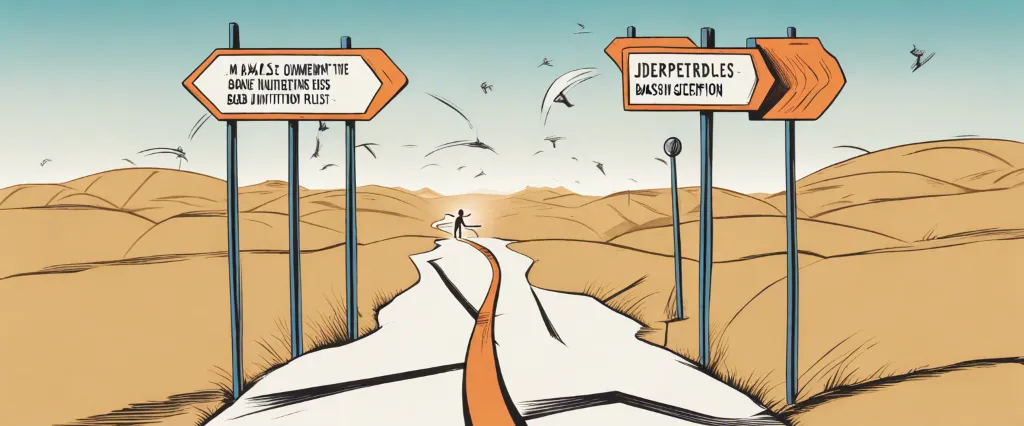In his thought-provoking book, “The Icarus Deception,” bestselling author Seth Godin challenges society’s prevailing notions about success and creativity. Through a captivating blend of storytelling and insightful analysis, Godin urges readers to embrace their inner artist and dare to go against conventional wisdom. A highly influential author, entrepreneur, and marketing guru, Seth Godin has written numerous bestselling books, including “Linchpin” and “Purple Cow.” With his unique perspectives on marketing, creativity, and personal growth, Godin has gained a dedicated following and continues to inspire countless individuals to break free from mediocrity and pursue their true passion.
Chapter 1: The Myth of Icarus – Challenging Conventional Wisdom
Chapter 1 of “The Icarus Deception” by Seth Godin challenges the conventional wisdom surrounding the Greek myth of Icarus. Traditionally, the myth teaches us to be cautious, warning against reaching too high or attempting the seemingly impossible. However, Godin argues that this interpretation stifles creativity and discourages individuals from embracing their true potential.
The author believes that society’s fear of failure and rejection constrains people, preventing them from taking risks and pursuing their passions. Godin challenges the reader to reframe the myth of Icarus, suggesting that it instead illustrates the dangers of playing it safe and conforming to societal expectations.
Godin emphasizes the importance of “the connection economy,” which he defines as a world where success is driven by pivotal relationships and meaningful interactions. He argues that in this economy, art is not just a product, but a means of expressing human connection and emotion.
Furthermore, the author highlights the significant shifts taking place in the modern world, where conformity and industrialization are being replaced by individualism and innovation. The digital age and the democratization of art have enabled everyone to be a creator, removing barriers that once limited access to traditional modes of creation.
By challenging conventional wisdom and encouraging individuals to embrace their creativity, take risks, and connect with others on a deeper level, Godin suggests that we can break free from the constraints imposed by society, manifesting our full potential as artists and creators.
Chapter 2: Embracing the New Connection Economy – Thriving in a Changing World
Chapter 2 of “The Icarus Deception” by Seth Godin, titled “Embracing the New Connection Economy – Thriving in a Changing World,” explores the shift from the industrial economy to the connection economy and emphasizes the importance of embracing this change to thrive in the modern world.
Godin begins by highlighting how the traditional industrial economy relied on conformity and compliance, valuing homogeneity and predictability over creativity and individuality. However, in the connection economy, the rules have changed. With the advent of the internet and social media, anyone can now connect with others and share their ideas, work, and creations directly. This enables individuals to stand out and make a difference in the world.
The chapter explains how the connection economy is built on trust, authenticity, and relationships. People now have the power to connect globally, collaborate across borders, and build tribes of like-minded individuals. This empowerment allows individuals to bypass traditional gatekeepers and create their own platforms and audiences.
Godin emphasizes that in this new economy, success lies in embracing our true selves, unleashing our creativity, and embracing uncertainty. He encourages readers to go beyond conformity and fear, rejecting the old rules and embracing the freedom and opportunities of the connection economy.
Godin also cautions against the dangers of hiding in the shadows, relying on others to give us permission or waiting for perfect conditions to take action. He advocates for embracing vulnerability and taking risks, as these are essential for growth and success in the connection economy.
Overall, the chapter emphasizes that individuals who embrace the connection economy, nurture their creativity, create their own platforms, and build meaningful connections with others will be the ones to thrive and make a significant impact in today’s changing world.
Chapter 3: The Rise of the Artist – Redefining Creativity and Entrepreneurship
Chapter 3: The Rise of the Artist – Redefining Creativity and Entrepreneurship in the book “The Icarus Deception” by Seth Godin explores the changing landscape of creativity and entrepreneurship in the modern era. This chapter highlights the importance of embracing one’s artistic abilities, as well as the need for artists to become entrepreneurs.
Godin argues that the traditional definition of an artist as someone who creates physical art is outdated. In today’s society, everyone has the potential to be an artist, regardless of their profession. To succeed in the current world, individuals must tap into their creative abilities and bring new ideas to the table.
The author emphasizes the need for artists to not only focus on their craft but also become entrepreneurs. Artists should take charge of their careers, market their work, build a community, and take risks. According to Godin, creativity and entrepreneurship go hand in hand, as artists need to think like entrepreneurs to thrive in the ever-changing landscape.
Godin further emphasizes that artists should aim to make an impact through their work. Instead of creating art solely for personal expression, artists should strive to make a difference in the lives of others, solve problems, and provoke change. By doing so, artists can carve a niche for themselves and create meaningful connections with their audience.
The chapter concludes by asserting that embracing creativity, coupled with an entrepreneurial spirit, is essential for artists to thrive and make a lasting impact. Success is no longer determined solely by talent or skill but also by an individual’s ability to adapt to the new reality. Ultimately, artists must seize the opportunity to redefine their role and contribute to the ever-evolving creative landscape.
Chapter 4: The Power of Emotional Labor – Adding Value through Authenticity

Chapter 4 of “The Icarus Deception” by Seth Godin, titled “The Power of Emotional Labor – Adding Value through Authenticity,” explores the importance of emotional labor in our professional and personal lives. The chapter emphasizes the need to embrace our emotions and share our genuine selves with others.
Godin argues that emotional labor is the key to standing out in a world where automation and outsourcing have taken over many industries. He highlights the value of emotional labor, which he defines as the act of investing time and effort to understand and connect with others on an emotional level. This goes beyond simply performing a task or providing a service; it involves genuine care and empathy.
Authenticity is identified as a crucial element of emotional labor. Godin explains that being authentic means allowing ourselves to be vulnerable and sharing our true selves with others. In a society that often rewards conformity and fitting into expected roles, embracing authenticity can be challenging. However, being genuine, taking risks, and expressing our emotions allows us to create deeper connections and build trust.
Godin urges readers to step out of their comfort zones and change their mindset about emotional labor. He encourages everyone to view it as an opportunity rather than a burden, understanding that it can lead to personal growth and success. By embracing emotional labor, individuals can develop their emotional intelligence, become better leaders, and make a lasting impact on others.
In conclusion, Chapter 4 underscores the power of emotional labor in adding value to our lives. By being authentic and investing in emotional connections, individuals can differentiate themselves in today’s increasingly automated world and create meaningful relationships.
Chapter 5: The Fear of Failure – Embracing Risk and Embracing Growth
Chapter 5: The Fear of Failure – Embracing Risk and Embracing Growth of Seth Godin’s book “The Icarus Deception” explores the concept of fear of failure and how it hampers our ability to take risks and grow both personally and professionally.
Godin highlights that in today’s fast-paced and ever-changing world, playing it safe is the riskiest choice one can make. He emphasizes that our fear of failure often arises from societal conditioning and a deep-rooted desire to fit in. The author argues that the fear of failure is a barrier preventing individuals from reaching their full potential and embracing their true creative selves.
Godin encourages readers to acknowledge and embrace the discomfort that accompanies failure. Failures are not something to be feared but rather seen as valuable stepping stones on the path to success. By reframing failure as a necessary part of growth, individuals can overcome their fear and take risks that lead to innovation and progress.
The author argues that the fear of failure often stems from the fear of judgment and criticism. However, he reminds us that the critics are not the ones who define us; it is our own inner voice that matters the most. Taking risks and embracing failure requires shifting our focus from seeking external validation to cultivating self-belief and resilience.
In this chapter, Godin stresses the importance of embracing vulnerability and celebrating our failures. He encourages readers to reframe failures as learning experiences and to surround themselves with a supportive network that understands the value of risk-taking.
Ultimately, Godin’s message is clear: success comes from pushing through the fear of failure, embracing risk, and welcoming growth. By reframing our relationship with failure, we can unlock our true potential and achieve greater creative and personal fulfillment.
Chapter 6: The Need for Remarkable Work – Standing Out in a Crowded Marketplace
Chapter 6 of “The Icarus Deception” by Seth Godin explores the concept of remarkable work and the importance of standing out in a crowded marketplace. In a world overwhelmed with mediocrity and conformity, the author argues that being remarkable, doing work that is truly exceptional and unique, is essential for success and fulfillment.
Godin emphasizes how the traditional path to success, which involves following the rules and blending in, is no longer viable in today’s society. Instead, he urges readers to embrace their creativity, take risks, and seek to do work that truly matters to them. By doing so, individuals can make a significant impact both personally and professionally.
The chapter highlights the significance of creating art, regardless of the medium, as a means of self-expression and as a way to generate value for others. Godin emphasizes that art is not limited to traditional forms such as painting or writing, but can be found in any work that is created with passion and purpose.
Moreover, the author emphasizes the power of connection in remarkable work. By engaging and connecting with others, individuals can cultivate a tribe of like-minded individuals who appreciate and support their art. These connections not only generate success but also help to inspire and motivate artists to continue their exceptional work.
In conclusion, Chapter 6 stresses the importance of breaking free from the ordinary and embracing remarkable work that stands out in a crowded marketplace. By pursuing one’s true passion, being creative, and connecting with others, individuals can create a lasting impact while finding fulfillment in their personal and professional lives.
Chapter 7: The Community Connection – Building and Engaging with Your Tribe
Chapter 7 of Seth Godin’s book “The Icarus Deception: How High Will You Fly?” is titled “The Community Connection – Building and Engaging with Your Tribe.” In this chapter, Godin highlights the importance of building a community and actively engaging with them, as it is a crucial aspect of success in today’s connected world.
Godin emphasizes that creating art and sharing it with the world is not enough. Art needs a tribe – a dedicated community of fans, followers, and supporters who believe in and connect with the work. Building a tribe is a key element in the creation of meaningful art. A tribe is like a safety net, enabling artists to take risks, experiment, and explore without the fear of failure.
The author emphasizes the need to connect deeply with the tribe and involve them in the creative process. This involves creating platforms to allow for conversation, feedback, and collaboration. Godin suggests using social media, blogs, and other online platforms to start conversations, share updates, and communicate directly with the tribe. By doing so, artists can gain valuable insights, understand their audience better, and create a sense of belonging within the tribe.
Godin notes that the community connection extends beyond the online world. He encourages artists to consider organizing physical gatherings and events to connect with their tribe on a more personal level. Such events provide an opportunity for artists and their tribe to engage in meaningful conversations, share experiences, and strengthen their bond.
In summary, Chapter 7 of “The Icarus Deception” emphasizes the critical role of building and engaging with a tribe. By involving the community in the creative process and connecting with them deeply, artists can create a supportive environment that encourages creativity, growth, and success.

Chapter 8: The Revolution of Art – Embracing Your Inner Artist and Changing the World
Chapter 8 of “The Icarus Deception” by Seth Godin, titled “The Revolution of Art – Embracing Your Inner Artist and Changing the World,” delves into the transformative power of embracing one’s artistic nature and the impact it can have on society.
Godin begins by explaining that society has traditionally revered and rewarded the industrialist, the one who diligently follows the established rules and produces goods efficiently. However, with the rise of technology and automation, the industrialist’s role has diminished, making it imperative for individuals to tap into their inner artist. The artist, as Godin defines, is someone who brings creativity, passion, and vulnerability to their work, and disrupts the status quo.
The author argues that embracing our artistic inclinations allows us to create work that deeply resonates with others, challenging conventional norms and demanding attention. Art is no longer restricted to traditional forms such as painting or sculpture but can be present in every field, from business to education to social activism. To be an artist, one must have the courage to express their unique perspective, engage with their emotions, and step outside their comfort zone.
Moreover, Godin emphasizes the need for artists to embrace fear and uncertainty, as well as the inevitable failure that comes with taking risks. Only by pushing past societal expectations and embracing vulnerability can artists truly make a difference in the world. They have the potential to inspire and lead others, creating a ripple effect of change.
In conclusion, Chapter 8 of “The Icarus Deception” encourages readers to recognize and nurture their inner artist. By embracing their creativity and challenging the status quo, individuals can make a profound impact on society, regardless of their field. The revolution of art lies in the ability to create work that moves and inspires others, ultimately transforming the world.
After Reading
In conclusion, Seth Godin’s book The Icarus Deception implores readers to embrace their creativity and take risks in order to find true success in the modern world. He challenges the myth that society has perpetuated, telling individuals to fly too low and play it safe. Instead, Godin argues that we must dare to fly too high, like Icarus, in order to unlock our full potential and make a meaningful impact. With compelling examples and thought-provoking insights, Godin encourages us to break free from the constraints of conformity and embrace our own unique voices. By doing so, we can unleash our creativity, build meaningful connections, and pave our own paths to success. The Icarus Deception serves as a wake-up call, urging readers to defy mediocrity and embrace the courage to fly higher than ever before.
1. Linchpin: Are You Indispensable?” by Seth Godin – This book, written by the same author as “The Icarus Deception,” explores the importance of becoming a linchpin in your industry, standing out from the crowd, and creating remarkable work.
2. “The War of Art: Break Through the Blocks and Win Your Inner Creative Battles” by Steven Pressfield – Pressfield dives into the world of creativity, providing insights and strategies to overcome the resistance that often holds us back from reaching our full potential, much like Seth Godin does in his book.
3. “Big Magic: Creative Living Beyond Fear” by Elizabeth Gilbert – Gilbert, known for her international bestseller “Eat, Pray, Love,” invites readers to embrace their creativity and live a more inspired life. This book encourages embracing curiosity, taking risks, and developing resilience against fears that stifle creativity.
4. “The Creative Habit: Learn It and Use It for Life” by Twyla Tharp – In this insightful book, renowned choreographer Twyla Tharp shares her wisdom on developing and nurturing creativity. Tharp emphasizes the importance of discipline, rituals, and consistency in the creative process.
5. Originals: How Non-Conformists Move the World” by Adam Grant – In “Originals,” Grant explores the psychology behind originality and offers practical advice on how to champion new ideas, challenge the status quo, and navigate uncertainty. This book will inspire readers to embrace their unique ideas and overcome the fear of taking risks.




